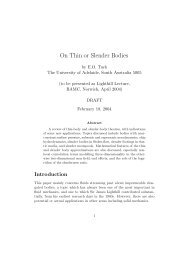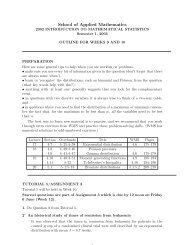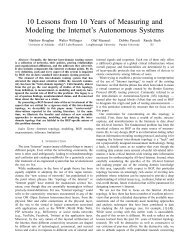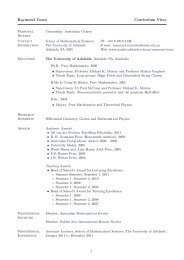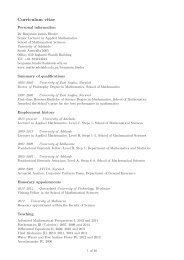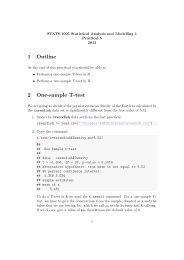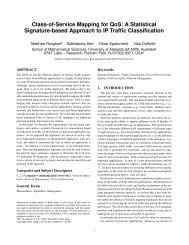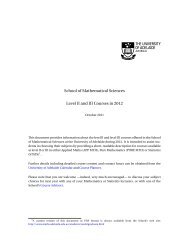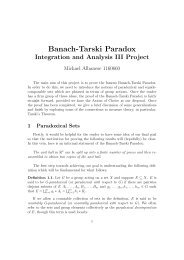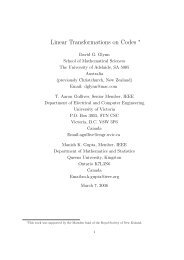PDF of Lecture Notes - School of Mathematical Sciences
PDF of Lecture Notes - School of Mathematical Sciences
PDF of Lecture Notes - School of Mathematical Sciences
You also want an ePaper? Increase the reach of your titles
YUMPU automatically turns print PDFs into web optimized ePapers that Google loves.
2. STATISTICAL INFERENCE<br />
=⇒ MSE T (θ) = Var(T ) =<br />
θ(1 − θ)<br />
.<br />
n<br />
Remark<br />
This example shows that MSE T (θ) must be thought <strong>of</strong> as a function <strong>of</strong> θ rather than<br />
just a number.<br />
E.g., Figure 18<br />
Figure 18: MSE T (θ) as a function <strong>of</strong> θ<br />
Intuitively, a good estimator is one for which MSE is as small as possible. However,<br />
quantifying this idea is complicated, because MSE is a function <strong>of</strong> θ, not just a number.<br />
See Figure 19.<br />
For this reason, it turns out it is not possible to construct a minimum MSE estimator<br />
in general.<br />
To see why, suppose T ∗ is a minimum MSE estimator for θ. Now consider the estimator<br />
T a = a, where a ∈ R is arbitrary. Then for a = θ, T θ = θ with MSE Tθ (θ) = 0.<br />
Observe MSE Ta (a) = 0; hence if T ∗ exists, then we must have MSE T ∗(a) = 0. As a<br />
is arbitrary, we must have MSE T ∗(θ) = 0 ∀θ, ∈ Θ<br />
=⇒ T ∗ = θ with probability 1.<br />
Therefore we conclude that (excluding trivial situations) no minimum MSE estimator<br />
can exist.<br />
Definition. 2.1.5 The bias <strong>of</strong> the estimator T is defined by:<br />
b T (θ) = E(T ) − θ.<br />
79





